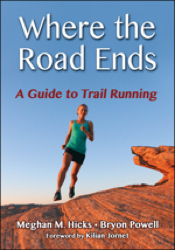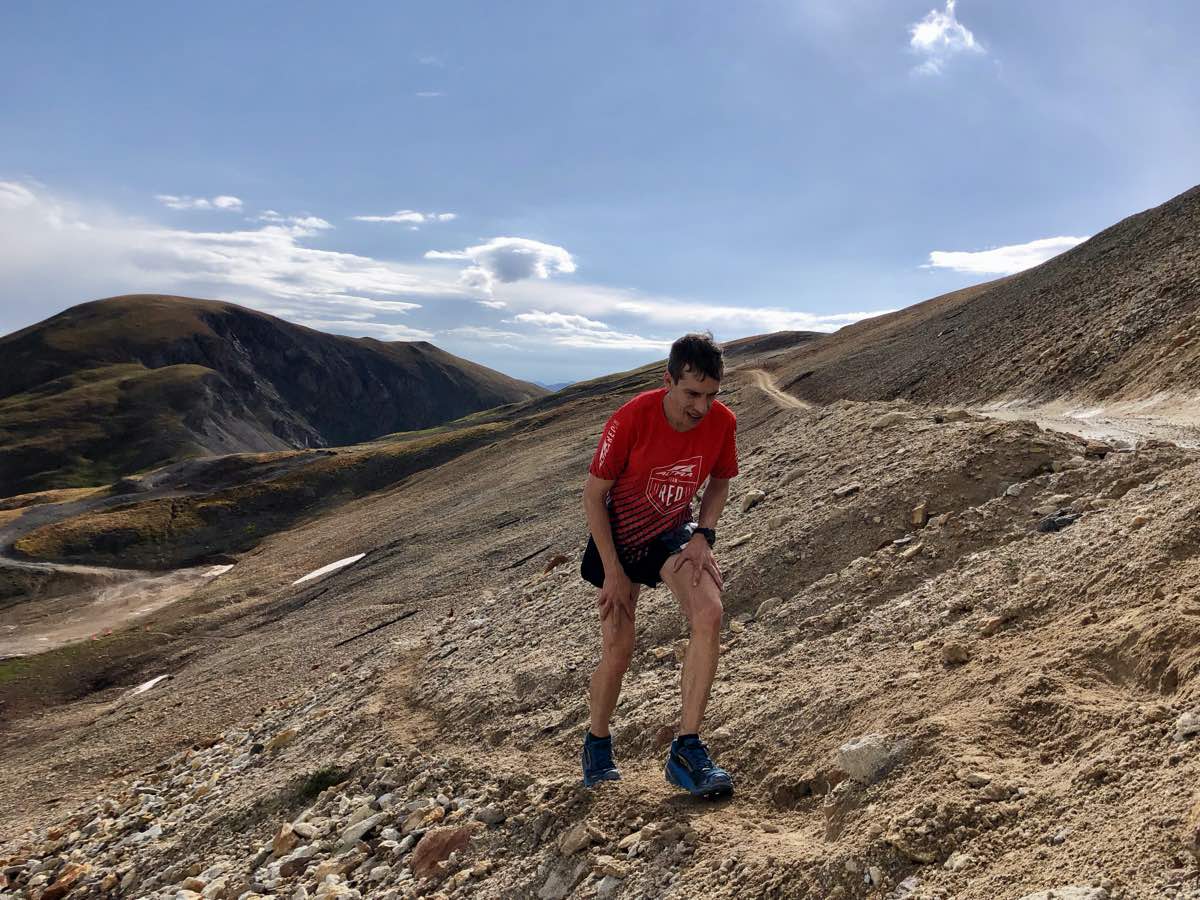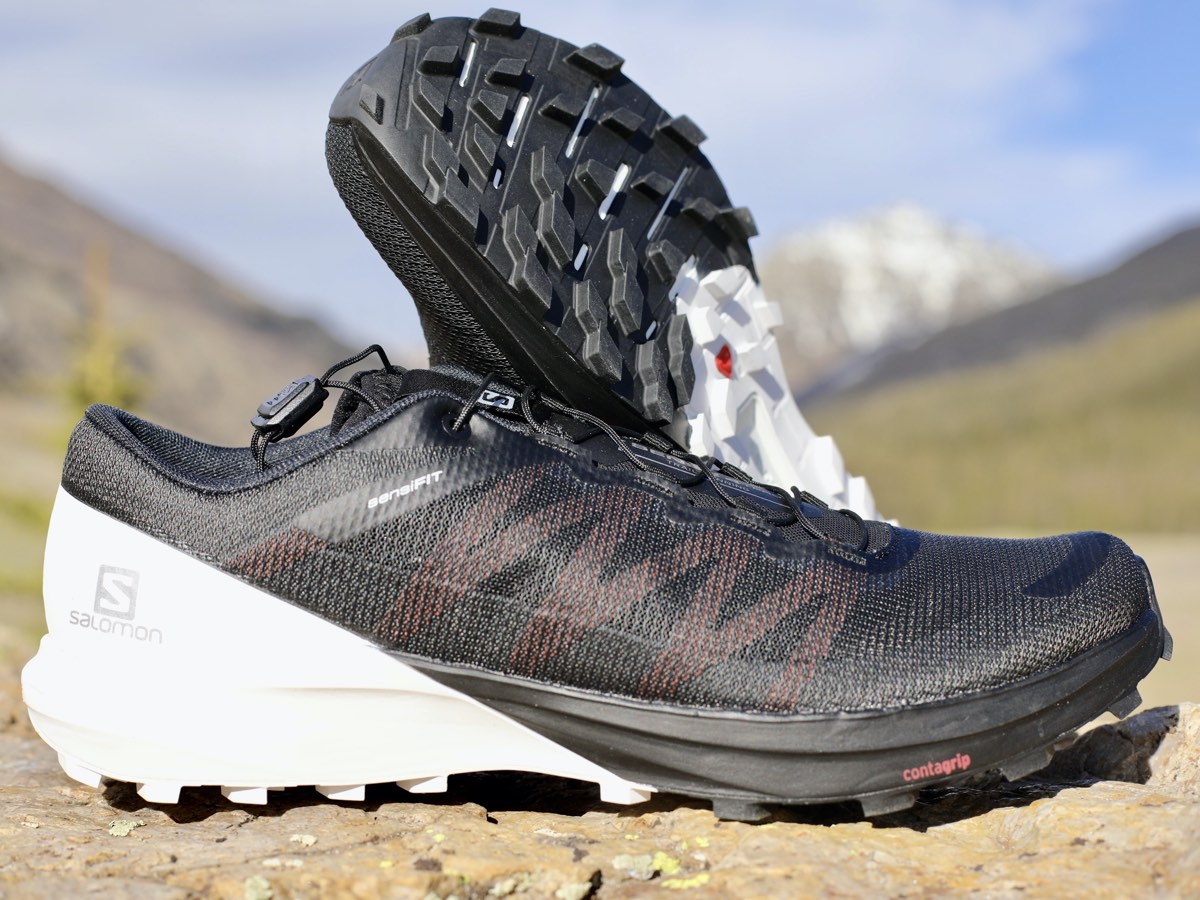
Like this article? Get your copy of the book “Where the Road Ends!”
Welcome to this month’s edition of “Where the Road Ends: A Guide to Trail Running!” That’s the name of both this column and the book Meghan Hicks and Bryon Powell of iRunFar published in 2016. The book Where the Road Ends: A Guide to Trail Running is a how-to guide for trail running. We worked with publisher Human Kinetics to develop a book offering the information anyone needs to get started, stay safe, and feel inspired with their trail running. The book Where the Road Ends teaches you how to negotiate technical trails, read a map, build your own training plan, understand the basics of what to drink and eat when you run, and so much more.
This column aims to do the same by publishing sections from the book as well as encouraging conversation in the comments section of each article. We want you to feel inspired and confident as you take on your first few trail runs as well as connected to iRunFar’s community of trail runners!
From shoes to apparel and from packs to lighting, having the right gear can make your time on the trails more enjoyable. That said, you don’t need to be a gear geek as you become a trail runner—simplicity is one of the sport’s defining characteristics and, we dare say, virtues. A little bit of the right gear can take you a long way!
This article is the first in a three-part series on the basic trail tools you might want to make your trail running more enjoyable and safe. Here in part 1, we talk about trail running shoes. In part 2 next month, we’ll look at clothing. And in part three, we’ll cover packs, flashlights, navigation equipment, and a few other accessory items that can aid your off-road running. All of these articles are excerpted from Chapter 5 in Where the Road Ends.
Do You Need Trail Running Shoes?
The dirty little secret of trail running is that you can safely and enjoyably complete most trail runs in a pair of road running shoes. If you’re already a road runner, just slip on your favorite pair of shoes and head out the door. Even if you’re not a runner, there’s a good chance that you have a pair of running shoes lying around somewhere that you can slip on for a couple runs.
Top trail runner Dylan Bowman echoes that sentiment, “A common misconception is that runners need a trail shoe in order to run effectively on trails. That usually means shelling out for a pair of shoes that are a bit heavier and more technically aggressive than your average road shoe. For people who come from a road running background or people who live where nontechnical trails are abundant, this may be an unnecessary expense when their tried-and-true road shoe of choice would perfectly suffice.”
Why You Might Want Trail Running Shoes
That said, trail shoes have a number of features made specifically to help you run on rough terrain. We’ll use the rest of this article to look at those features and explain what they’re supposed to do for you.
Let’s begin with protection. Trail shoes can offer two types of additional protection over that offered by road shoes. First, they give underfoot protection in the form of a rock plate in the forefoot and, possibly, running the length of the shoe. This rock plate, which usually consists of either a piece of plastic a few millimeters thick or a dense woven fabric somewhere above the outsole and below your foot, is meant to prevent rocks, roots, or other obstacles from painfully impacting your foot from underneath upon footfall. This feature is sometimes known as push-through protection. With portions of outsole rubber increasingly removed from road running shoes to decrease weight, the full or nearly full coverage on the outsoles of most trail running shoes provides an additional layer of push-through protection. The thicker midsoles (the foam bit between your feet and your shoe’s outsole) found in some of today’s oversized shoes can also add some underfoot protection.
Bowman points out, “Of course, there are some advantages to having a trail-specific footwear option in your quiver. First, trail shoes generally have more of a pronounced rubberized outsole to help with traction. Beyond the advantage of sure-footedness, extra rubber (and a rock plate in some cases) will also help with improving protection while increasing the shoe’s durability. Because most road racing shoes have larger areas of exposed midsole foam, they often break down quicker and need to be replaced more often than their trail counterparts.”
The upper of a trail shoe, the fabric and overlay materials that wrap over the foot, can also provide strategic protection. The most important aspect of this over-foot protection is the toe bumper. The toe bumper often consists of the outsole of the shoe bent up in front of the toes in combination with heavier fabric or a rubber horizontal wrap around the front of and, sometimes, the sides of the toes. Its purpose is to save you (and your toes) from a world of hurt when you inevitably kick a rock, root, or cactus. Trail shoes with uppers made from more robust fabrics or with more substantial fabric, plastic, or rubber overlays can help protect your feet should you brush a branch, cactus, or other pointy object. Although more subtle, the materials chosen for the upper of a trail shoe often reduce the entry of dust and sand.
Although trail running shoes a decade or two ago were the heavily constructed brethren of hiking shoes, the trend has been to streamline both underfoot and upper components to provide just enough protection while maximizing overall performance.
Trail shoes often offer a bit more stability for trail-specific conditions than road shoes. One way that trail shoes offer stability is via what’s called lockdown. Quite simply, lockdown is the ability of the upper to secure your midfoot and heel and, as a result, lock your entire foot into your shoe. If someone says a shoe feels sloppy or loose, or that their foot is sliding around in it, he or she could be talking about insufficient lockdown. Trail shoes can also offer an increased feeling of stability by slightly flaring the outsole and midsole wider than your foot. In essence, this flare works in a similar manner to the outrigger on a canoe or training wheels on a bike; the wider platform reduces excessive movement in either direction.
The more obvious benefit of many trail shoes is the increased traction they provide. Of course, good technique and some experience can go a long way in maximizing the traction inherent in any pair of running shoes! Nevertheless, adding deeper lugs to a shoe certainly makes it easier to find purchase amidst some slippery situations. If you compare the outsole of a road running shoe with a general-purpose trail shoe, you’ll notice that the trail shoe has deeper, more widely spaced lugs.
Some trail shoes also have soles that are partly or fully made up of softer rubber. Although softer rubber wears down more quickly than the harder rubber found on road shoes and most trail shoes, the softer rubber is stickier, which helps when trying to find footing on rock. (The same concept applies to rock-climbing shoes.)
A final advantage of some trail shoes is additional durability of the upper. This increased durability can come from more robust meshes or material used in the body of the upper as well as strategic use of fabric, rubber, and plastic overlays. Even with a more durable mesh, if you find your shoes caked with mud or sand at the end of the run, a quick hose off can increase the life of the upper.
As for an overall approach, Bowman says, “Many runners are looking for the footwear ideology that will allow them either to unlock some secret potential or simply to run injury free. My advice would be to choose a shoe that makes you feel good after you run rather than a shoe that makes you feel good during a run. Oftentimes, a minimal and agile road racing shoe is what feels best during a trail run, but it leaves us broken down the next day. Recovery and longevity factors should be considered along with performance when choosing our trail footwear.”
Excerpted from Where the Road Ends: A Guide to Trail Running, by Meghan Hicks and Bryon Powell. Human Kinetics © 2016.
Call for Comments
- Do you sometimes trail run in road shoe? If so, in what conditions do you use road shoes? And, in what conditions do you switch over to trail running shoes?
- What aspects of trail-specific shoes were most useful to you when you first started trail running?
- How do you choose your trail shoes? What features do you seek when it’s time for a new pair?



